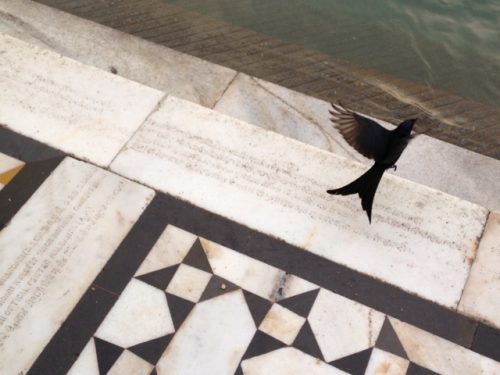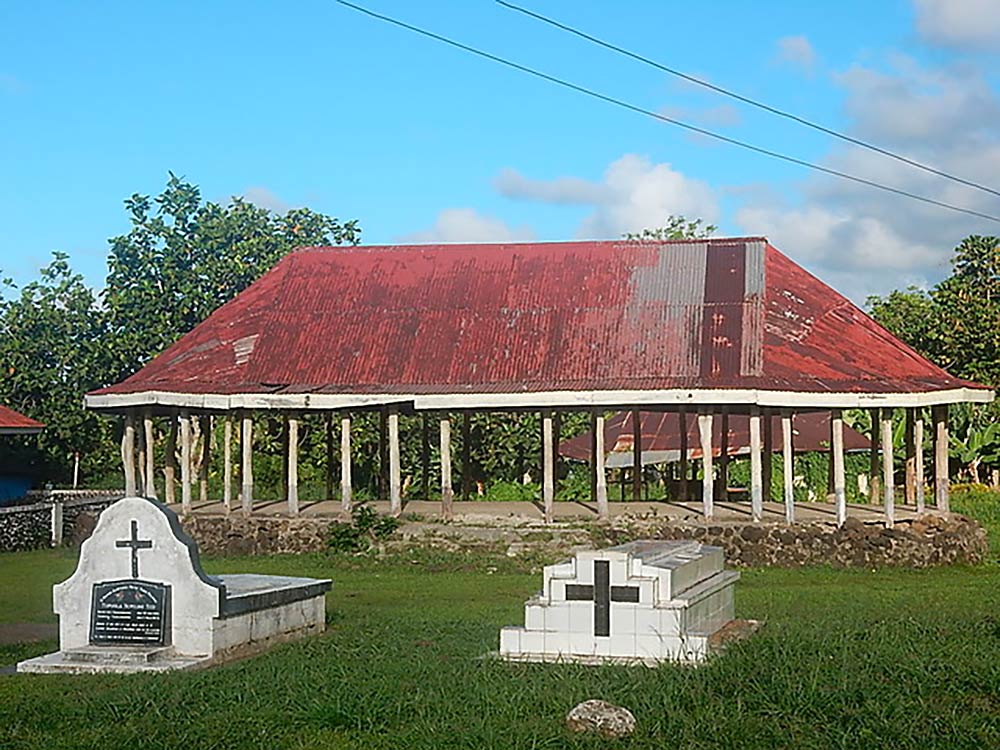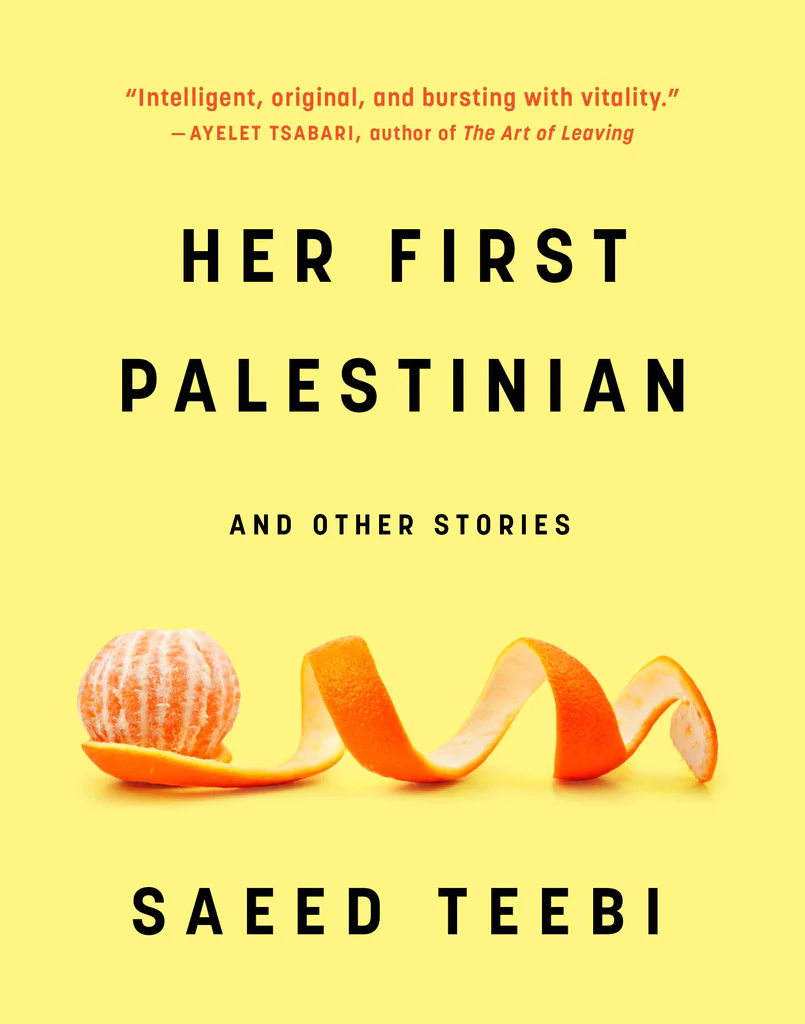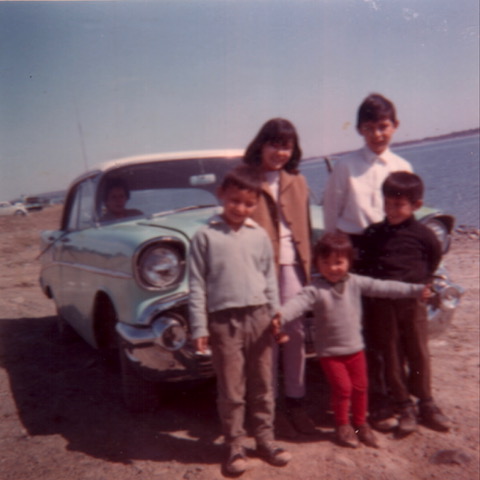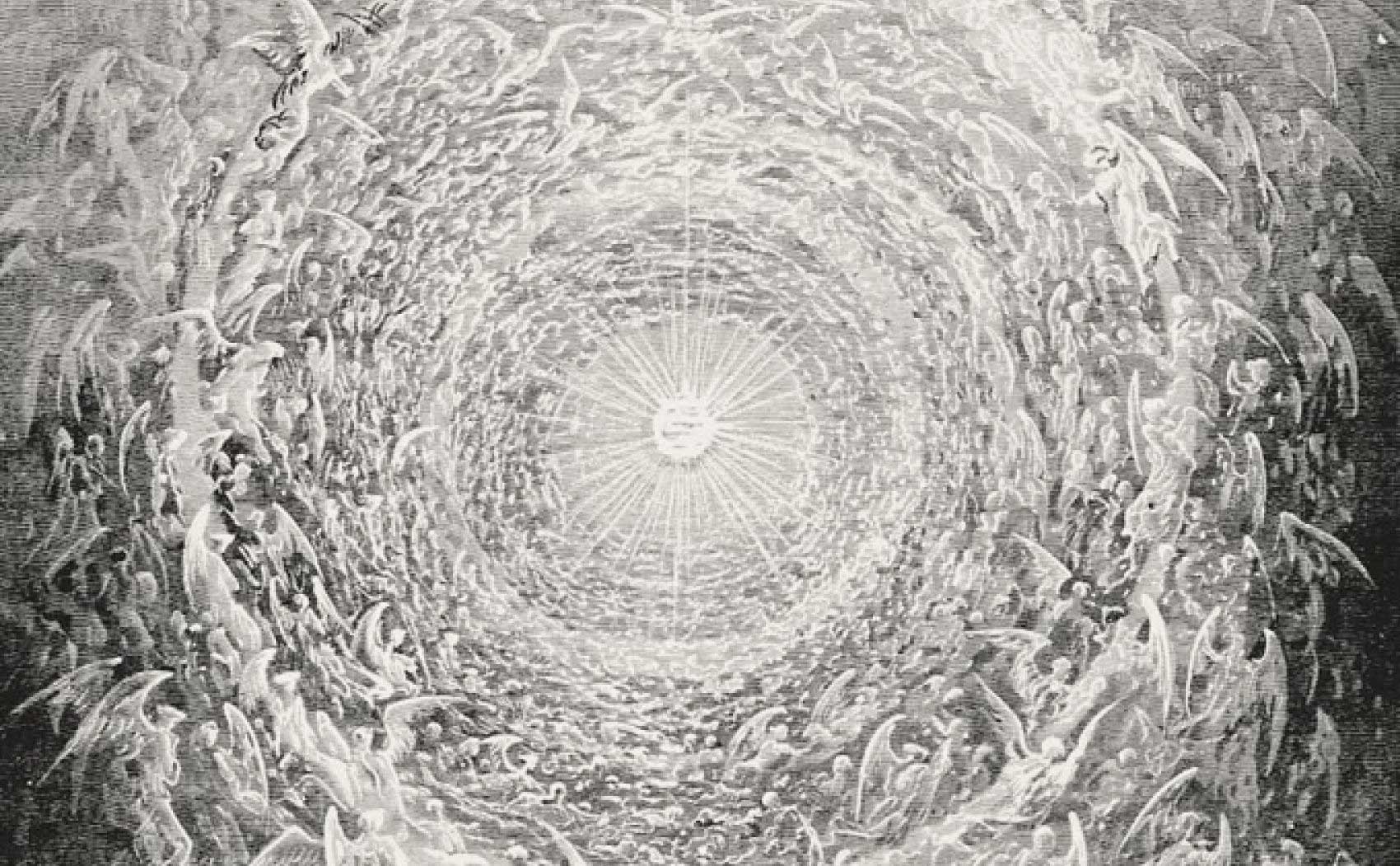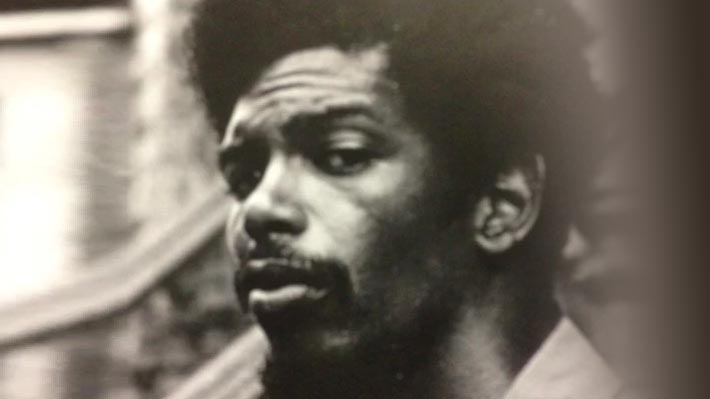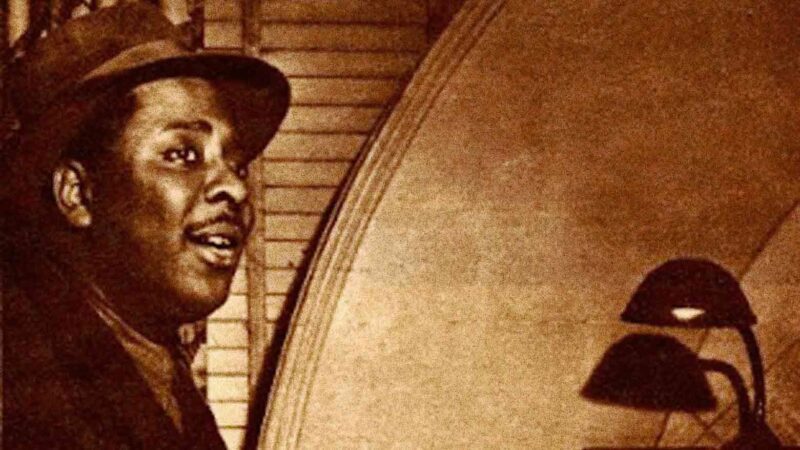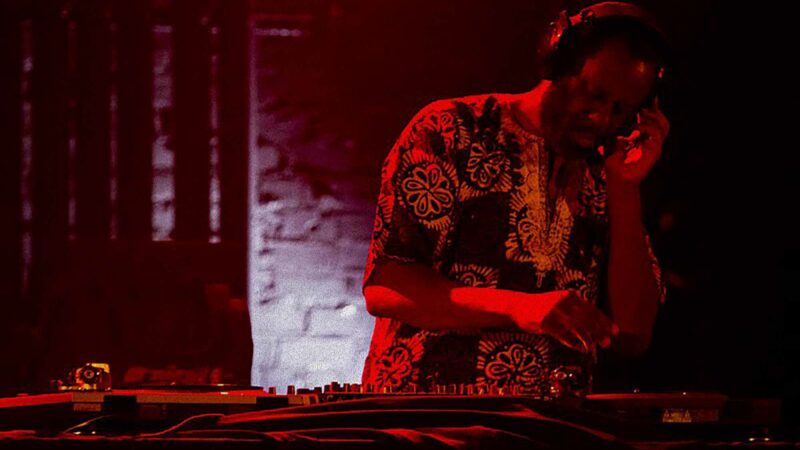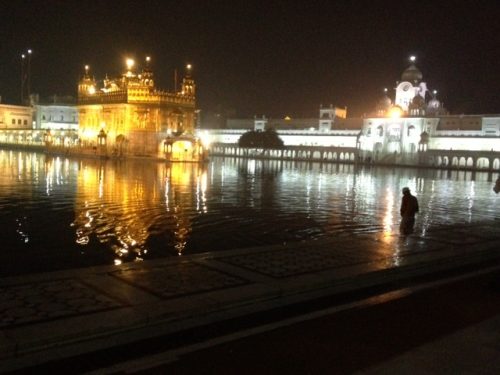
Every summer during school holidays my mother would take us from Indian-administered Kashmir to Ludhiana in Punjab to visit our grandparents. The address still resides within me: ‘30 Civil Street. Near Ghumar Mandi.’ Summers are extremely hot there, especially the kiln-fire month of June, but we managed with ceiling fans and a “desert cooler.” Each one of the rooms in that partially plastered, red-brick house was unique, as if it belonged to a slightly different imponderable epoch. My grandfather didn’t have enough money to build the house all at once, so he kept adding a room every five years or so.
I would insist on sleeping in his room. Most cousins didn’t want to sleep there. Grandfather slept with the lights on, and he woke up very early in the morning. He suffered from chronic bronchitis (after a longago trip to a hill-station) and occasionally lapsed into yoga-inspired breathing exercises. Plus the room carried the mild odour of a chemical laboratory. In the corner cupboard there were four or five darkbrown bottles of chemicals, a Bunsen burner, and an optical microscope.
My scientific grandfather would wake up at 4:30 sharp, recite the Japuji, and soon afterwards hold dialogues between God and Darwin. Halfway into the dialogues he would slip into a Sufi-style swoon.
Nanak nadari nadar nihal. Nanak nadari nadar nihal.
God would win the argument in the end, but the next day Darwin would challenge God once again.
We called him Bhapaji, and so did everyone else. Even our grandmother called him Bhapaji. After reciting bani for two or three hours, Bhapaji would step out, do a neem datun by the guava tree in the courtyard. More breathing exercises would follow, and he would hurriedly scan through the Tribune. At times he would ask me to read the paper out loud. For a few minutes I would gladly become his highly underqualified reader — often stumbling over strange sesquipedalian words. Bhapaji would correct me gently, my mispronounced ‘Pandemonium in the Parliament’. He would explain ‘Emergency’ and ‘Riparian’ to me in a language I was able to comprehend.
After news, he would eat a light breakfast of milk with honey, toast, and fruit, and feeling more relaxed he would tell us about Partition. (These tellings are the ‘enchanting’ fairy tales of my childhood, and to this day, some thirty years later, some 7000 miles away, on an entirely different continent, possess power to cause real and unreal disturbances in my daily routines and equilibriums.)
Bhapaji was a partition survivor. Both his parents died in the year 1947. Like millions of others, the division left him shocked, bewildered and transformed into a refugee in his own land. Several years had passed by. He had retired now as the headmaster of a high school in Ludhiana, the so-called Manchester of Punjab. Those days I neither possessed the knowledge nor the psychic apparatus to comprehend his loss. I don’t think I will ever grasp it fully.
Evenings I would walk with him, and it was during those long walks I found out that before Partition he taught the sciences on the wrong side of the border. The story that moved me the most was how chemistry had in fact saved his life during mass violence. One of his student’s war-hero brother had rescued him from a wretched camp in 1947. Teaching the Periodic Table, and how to charge an Electroscope had positive consequences at least for this family.
Grandfather would always take along a walking stick or a black umbrella. His beard was grey, and eyes kind and intelligent. Dignified. Starched turban. Black shoes. Whenever the story was narrated, while walking, one particular detail would stand out. During that moment of crisis, when people around him had given up hope, Bhapaji, unable to think about India or Pakistan, had only thought about the Golden Temple. At that moment all vectors, tracks, roads, and great circles pointed towards the shimmering waters of Amritsar.
*
I have little recall now where and when and on which wall of my childhood I saw my first Golden Temple photograph. What was my first real long-exposure visit like? Was it my maternal grandfather who first encouraged me to take those tiny exploratory steps into the waters of amrit sarovar? Who told me that the ‘temple’ (Harmandar Sahib) was not ‘golden’ until the 1830’s? Growing up I would hear discontinuous ‘sakhis’ about its foundation stone and the chief-architect. Guru Arjan, the fifth Sikh Guru, it is said, designed the original building towards the end of the sixteenth century. Guru Arjan also oversaw the construction of the city of Amritsar, and compiled the Sikh scripture.
However, this creative moment (in Punjab’s history) of book-making and spiritual-center making was marred by a huge tragedy. Guru Arjan was arrested and tortured (Circa 1606) by officials on orders of the Emperor. Visual representations of the stoic Guru’s last few days are perhaps some of the most heartbreaking, and in those pre-internet days (in post-partition, post-colonial India) the paintings would appear regularly in Sikh calendars. Because of those Punjab & Sind Bank calendars hung over the walls of my childhood, I discovered the Punjabi word ‘taseeha’ before the English word ‘torture’.
*
Now that I think about it, Harmandar Sahib (or the Golden Temple) was much more than a site of pilgrimage for my family members. This ‘constructed and socially produced’ place contributed to the psychic healing of millions of dismembered people. As there were no Partition memorials, the Darbar Sahib complex served (among other things) as an unofficial memorial to the dead and the displaced. I imagine my maternal grandparents walking bare feet along the parikarma, I see them circumambulating the shimmering waters working through their grief and loss.
Each spot in the complex is a storied spot, a link to ancestors, and a link to remembered glories, sacrifices, traumas and disasters. There are memories and mythologies around big and small holocausts there –the Ghalugharas. But, especially for Partition survivors, there were recent wounds and memories more intimate and fresh: this is where a father or mother or an uncle were reunited, this is where one searched forever for a brother or an aunt, who never arrived. In the Golden Temple complex in that serene and beautiful space, surrounded by the hum of near infinite music it is hard for the living not to mingle with the dead.
The Golden Temple (both in its ‘material’ and ‘psychic’ forms) absorbed a lot of felt-and-unfelt thought (also a lot of felt unthought) and in its own way provided my grandparents with hope to continue on. Beyond breaking point.
By the sarovar waters there is a tree of healing: a Zizyphus jujube. Over 400-years old now the Dukh Bhanjani Beri is visibly fragile, and wrinkled and vulnerable to insects, but its leaves are mostly green and branches flare out in all directions.
For Sikh people all over the world (no matter how tenuous their relationship) did the entire complex become an unofficial memorial to loss?
Also a monument to survival against all odds.
Vamik Volkan, whose work focuses on large group trauma, suggests: “Sometimes a monument as a linking object absorbs unfinished elements of incomplete mourning and helps the group to adjust to its current situation without re-experiencing the impact of the past trauma and its disturbing emotions.”
*
The room where he slept and stored his little laboratory was the first room my grandfather built in new India after losing an entire house to Partition. Before moving to Ludhiana, some 84 miles from Amritsar, and before building that perennially ‘unfinished house’, the family wandered from city to city in divided Punjab… Many years later my mother told me a bit about growing up by the railway fields and about her father’s traumatic condition after Partition. Bhapaji’s brother would ask him to apply for a job. Bhapaji would join a school. Only to quit a few days later. It doesn’t surprise me, but ends up stirring a strange benumbing response. My grandfather felt paralyzed and was unable to teach for an entire year after the cataclysmic event.
To this day I know more about the chemical odors in his room and the deep purple rhombic crystals in a petri-dish; I know more about the way he would tie his starched mint-colored turbans, the glow of his safety pins, and the way he would apply Simco and fix his beard; I know more about the tapping sounds made by his walking stick, his black BATA ‘gurgabi’ shoes, and the crackling of his short wave transistor radio than I know about his inner life.
“Do you know the name of these crystals?” he asked in Punjabi and English.
Crystals, he said in English.
Before me, in a petri-dish, there is a little pile of dark purple crystals.
Then in an Erlenmeyer flask, half-filled with water, he dropped a few crystals, and I saw a confluence of science and magic.
Soon that clear, transparent water in the flask started becoming a garden of pink and randomly purple trees.
“Potassium permanganate.”
In my mind, Potassium permanganate is not just a fond crystal of a memory connected to my grandfather, Potassium is also indelibly linked to the martyrdom day of the chief architect of Golden Temple. On that ‘oscillating’ day, every year, my grandfather would open his cabinet and make large volumes of KMnO4 solution.
I say ‘oscillating’ because of the lunisolar calendar. Guru Arjan’s martyrdom day (or shahidi gurpurab) arrived guided by the moon. My grandfather, like several others, relied on an almanac (Jantri) to determine the corresponding date on the solar Gregorian calendar.
Like others he would ‘remember’ and ‘celebrate’ the day of mourning by distributing a special drink to the passers by. ‘Kachi lassi’ or ‘unfinished lassi’. The main ingredients of the concoction (which brims with Proustian possibilities for me in faraway Canada) are water, milk, sugar, chunks of ice, and rose extract (ruh-af-za).
Kachi lassi: Not to be confused with yoghurt based lassi.
Also, KMnO4 crystals are not an ingredient; potassium permanganate is not a part of the drink. It is only used to disinfect the glasses. Two or three buckets full of KMnO4 solution to begin with… Family members and friends from within the neighborhood would volunteer and take turns to wash used glasses.
My grandparents have set up a stall – a Chhabeel— under the shade of the guava tree outside the house… Bhapaji is serving lassi to thirsty passersby. Free. All welcome… He serves every year. My memory of kachi lassi and KMnO4 is really a convergence of memories of several years. Scorching temperatures + superheated winds are built into these happy memories. I feel embraced by my grandparents.
In 1984 we are based in Delhi. However, as usual, we visit Ludhiana during the summer holidays.
Guru Arjan’s gurpurab is fast approaching according to my grandfather’s Jantri. But something has gone terribly wrong.
The whole of Punjab is under Curfew.
Power blackouts. Phone disruption.
No newspapers. Censorship.
Permanently tuned to BBC world service, my grandfather’s short wave radio lay supine on a jute cot. Now and then it heaves and crackles.
Indira. Army. Militants. Amritsar. Golden Temple. (We don’t know what is going on.)
Pilgrims?
DEAD (We don’t know yet.)
*
June, 1984.
Operation Bluestar –even the most decorated generals and military historians acknowledge– was a disaster. The raid on the Golden Temple complex was less a ‘flushing out’ operation, more a massacre of innocent civilians.
Thirty years later there are more questions than answers. Why was Guru Arjan’s martyrdom day chosen as the day of attack? Why were thousands of pilgrims allowed into the Golden Temple complex just before the shock-and-awe operation? It resulted in a huge loss of life, and caused acute individual and collective trauma, which has found no closure. Seven battle tanks had rolled in… A hugely important heritage building was reduced to rubble… Firing squads executed captive men after tying their hands with turbans. Rare manuscripts and historical artifacts were seized, and the reference library was set on fire. The dying were even deprived of water by the army, and the dead were disposed off savagely with the speed of light. Thousands in Punjab were tortured, humiliated, thousands disappeared. To this day Bluestar is an open wound for millions. The full truth may never come out? But the narrative provided by the Indian authorities does get disturbed now and then. Recently it was disturbed (and convulsively so) by a declassified archive in the UK.
Operation Bluestar was not the ‘only option’. It was not the ‘last resort’. Recent articles in the media suggest that the standard narrative around this disaster has finally started to break even within the dominant discourse. Calls have been made in India to investigate Indira Gandhi’s criminal culpability. Bluestar had catastrophic consequences, and its aftermath is filled with events that caused unspeakable suffering for years on end.
Ironically, this dark chapter in Indian and Punjab history is also the least documented. The universities have done little research. In the libraries, there is a serious dearth of witness memoirs. Not enough literature grew out of this rubble. No significant biographies.
Jarnail Singh Bhindranwale, a seminary preacher (initially propped up by the Congress Party) had fortified the complex and terrorized both the minority and majority communities in Punjab. He did not have a mass following as it is made to appear (by disparate groups). His brand of power and extremism co-existed with Indira Gandhi’s. A narcissistic leader and dynast, she had previously suspended the country’s constitution and terrorized the entire country by assuming dictatorial control.
Over the years I have heard so many people discuss the army action. Regardless of differences most of them find the timing and the method of attack unacceptable.
Operation Bluestar left a traumatic imprint on the memory of the collective.
*
“Trauma: an overwhelming experience of a sudden or catastrophic events in which the response to the event occurs in the often delayed, uncontrolled, repetitive appearance of intrusive phenomena.”
–Cathy Caruth (Unclaimed Experience)
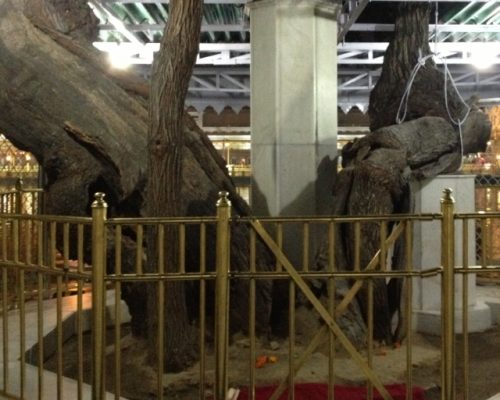
*
Several times I have gone back to that moment when our lives were about to change forever. But all we knew then was the curfew, the power blackouts, phone disruptions, and BBC world service.
It was lunchtime. We were gathered at the table. My grandmother had cooked ‘lobia’, but the grown ups seemed to have lost appetite. Only the children ate. I see myself eating and looking and looking at my parents and grandparents. The rest is absence of memory. That moment in time never really got integrated into normal memory.
A few days later we left Ludhiana and I recall to this day the near empty highway, the Grand Trunk Road. Check-posts everywhere. Punjab under heavy army occupation. Our first stop, a roadside dhaba, near empty. We sat on jute cots in the shade of unknown trees. Not far from the dhaba, near the green fields, an ancient well was visible, a Persian wheel in motion. The mechanical sounds of the wheel entered our ears intermittently. Fragile sounds made by falling water. Fatigued sounds made by two circling bulls.
Back in Delhi all through summer I felt more thirsty than ever. One day after school I bought water from a roadside vendor. No one knew the source of his water; he didn’t wash the glasses properly. He had no buckets filled with potassium permanganate solution. But I was very young and thirsty and took the risk. A few days later I fainted and was diagnosed with jaundice (Hepatitis A.) The whole world transformed into yellow. Bed-ridden at home for three months; my parents worried and sleepless. A very slow recovery. But like all things it came to an end, and in early October I returned to school. No debilitating fatigue now, no nausea and it was possible to walk slowly. The doctor advised me to walk all the way to school instead of taking the bus. This way you will regain strength quickly, he said.
On the 31st of October I walked faster than usual to my school. Around mid-day we were in the biology lab, dissecting. A strong odor of chloroform filled the laboratory. I still recall the red-brick St. Thomas church visible from the window, and the massive Catholic Cross. That is when our biology teacher made an announcement: Classes have been cancelled (Indira Gandhi in hospital. Shot by her bodyguards). Right afterwards she walked to my bench and put an arm round my shoulder. She knew about the doctor’s advice. She knew my destination was only two kilometers away. You walk carefully all the way back home, she said.
*
“Seize hold of a memory as it flashes up at the moment of danger.”
–Walter Benjamin.
*
November, 1984.
We lived in a yellow-painted apartment block. A mob passed by our block, attacking the Sikh citizens they saw on the streets. We took refuge in our neighbor’s house, but even there we could hear the acoustics of the mob, the barbaric slogans. “Khoon ka badla khoon say (Blood for blood).”
We were the lucky ones. We were spared. Around 20 minutes later, the mob passed our apartment block. I recall hearing a couple of gunshots fired in the air, followed by a dead silence, and the loud racist and bloodthirsty slogans receding, as if a demonstration of the Doppler effect.
The few hours we were in the neighbor’s house fill an enormous space in my mind. I have not been able to articulate those few hours, the burned remains of books and buildings I saw later and the tiny particles of ash floating in air.
*
“Those who survived are not true witnesses.” Primo Levi, the Italian chemist’s insight into genocidal violence in Europe is also valid for Delhi and other cities across India.
Only the dead are true witnesses. But the living have come to know a lot. That November India’s ruling Congress Party used state-controlled radio, television and the dreaded police force to conduct a major genocidal pogrom in Delhi. Nothing was spontaneous. Cabinet Ministers and Members of Parliament hired and directed mobs to burn to death as many Sikhs as possible. Public buses were used to transport the mobs. Voters’ lists were used to mark houses and businesses overnight. High officials distributed kerosene oil and white phosphorous. Witness testimonials talk about the innovative use of rubber tyres to simultaneously trap the target, create thick clouds of toxins and facilitate combustion.
Women were brutally gang-raped. They, too, are the ‘living-dead’ true witnesses.
The mass murder and genocidal rape was not confined to Delhi. Untold numbers were set on fire in more than forty cities throughout India. Books were burned; copies of Guru Granth Sahib were reduced to ashes in large numbers. This kind of coordination of the state apparatus to kill its own citizens in such large numbers was unsurpassed in post-partition Indian history.
The aching spectacle and the acoustics created by hired mobs are too horrific to describe in detail. Many victims had been earlier displaced by the Partition of India in 1947 and later by Indira Gandhi’s dreadful emergency in 1975. Most led impoverished existence in resettlement colonies on the fringes of Delhi weaving jute cots or working as carpenters or ironsmiths.
A few days later the head of the government, Rajiv Gandhi, justified the pogroms. When a big tree falls, the Earth shakes a little, he said, and almost instantaneously rewarded the guilty by making them ministers in his cabinet. He also announced medals for the police officers, who had facilitated the atrocity.
Instead of being tried by the International Criminal Court for facilitating a genocide and for shielding the perpetrators, Mr. Gandhi led his party to a landslide victory in the Parliamentary elections. He also received the highest civilian honor, the Bharat Ratna or the Jewel of India. Most Western governments developed a cozy relationship with him.
*
Afterwardness. Almost three decades and numerous compromised judicial commissions later, not a single prominent politician, cabinet minister, bureaucrat, judge, or a high-ranking police officer has been brought to justice. (No full and independent inquiry was ever conducted).
No memorials exist to the dead, and the Congress is even opposed to remembrance of lives and communities destroyed in November of that year. When busloads of foreign tourists visit Indira and Rajiv Gandhi ‘memorials’ (or forgetorials) they have little idea that when one walks in the Indian capital one actually walks on the ashes of Sikh citizens who perished some thirty years ago.
What lies beyond comprehension is that the Indian political class enjoys near infinite immunity after committing mass murder (and ‘memorycide’ — the last stage of genocidal violence). In vain one looks for hope within the civil society, but it seems the depths of horror and suffering do not disturb the inner life of the nation. A huge crime against humanity has been reduced to a “Sikh issue”.
In a recently televised interview the scion of Nehru-Gandhi dynasty, Rahul Gandhi, tried to defend the indefensible, and circulated new lies in order to hide the criminal culpability of his father.
As he spoke (with a dimpled smile) a shudder went through the exterminated resettlement colonies in Delhi¾ Trilokpuri, Kalyanpuri, Sultanpuri and Tilak Vihar’s Widow Colony– and awakened the dead.
But even the dead are afraid of the results of the latest Parliamentary elections in India. The BJP (the 2002 Gujarat pogrom party) is in power now with Modi as PM, and senior Congress Party leader, Kamal Nath (a perpetrator of November 1984) was sworn in as the Protem Speaker of Lok Sabha. By all accounts he has little remorse and is waiting to be named as the new leader of opposition.
For several years now it was unclear whether the international community was aware of the enormity of November 1984. But the 2011 Wikileaks reveal a slice of what the US government has known for a while: “…Congress Party leaders competed with one another to see which wards would shed more Sikh blood.”
*
A Pogrom is a wound on the psyche of the collective and without justice and reconciliation it leads to recurrences, which are similarly ignored.
*
Silence is not helpful. Memory, W.G. Sebald wrote, even if you repress it, will come back at you and it will shape your life. Not so long ago, before my mother passed away, I asked my own family members about their memories of November 1984. My sister told me how she has sought to erase the memories of her school, which was looted, partially destroyed, and set on fire by a mob. During those couple of hours in the neighbour’s house, I still recall, she kept saying, “Let’s go home. I have to finish my homework.” She was 12.
My father recalled his journey home from work on the evening of October 31. He was the commanding officer of a Signal Regiment (E-Block) near the Parliament. When the officers’ van passed by the All India Institute of Medical Sciences in central Delhi, he saw some signs of violence through the van window. As the violence intensified on November 1, 1984, Father received several desperate calls from his Sikh staff members: junior officers, signalmen, radio and cipher operators. He dispatched a Hindu driver to rescue them.
My mother said she had nothing to say. When I insisted, she told me about the regiment driver. Ishwar, the driver, called very late on the night of November 1. She had answered the phone. Ishwar was crying. “He told your father the details of the day, almost like an entry in a log book,” she said Then he broke down. Ishwar had driven for nine hours through Delhi, through fire and smoke, bodies and ash. He had rescued dozens of Sikh men and brought their families to the safety of a barbed-wire camp in Khanpur area in south Delhi. Many more needed help. Ishwar had not slept or eaten for the last sixteen hours. He could no longer stare in the eye of the horror.
“Your father tried to persuade Ishwar to make one more trip,” mother recalled. “But Ishwar broke down.” My mother was silent for a while. She spoke about Ishwar’s sobbing, crackling voice, and the complete collapse of language. “To this day I hear Ishwar’s voice and his scream,” mother said, her eyes filled with moisture. When she spoke several hours later, she asked me a question about the book I was working on. I could see that she felt like saying something to me, but she was unable to do so. And all I could think of for days on end was a chilling line by the German Romantic poet Heinrich Heine: Those who begin by burning books will end by burning people. In Delhi in 1984 this one line was completely inverted. Books were burned after burning people.
